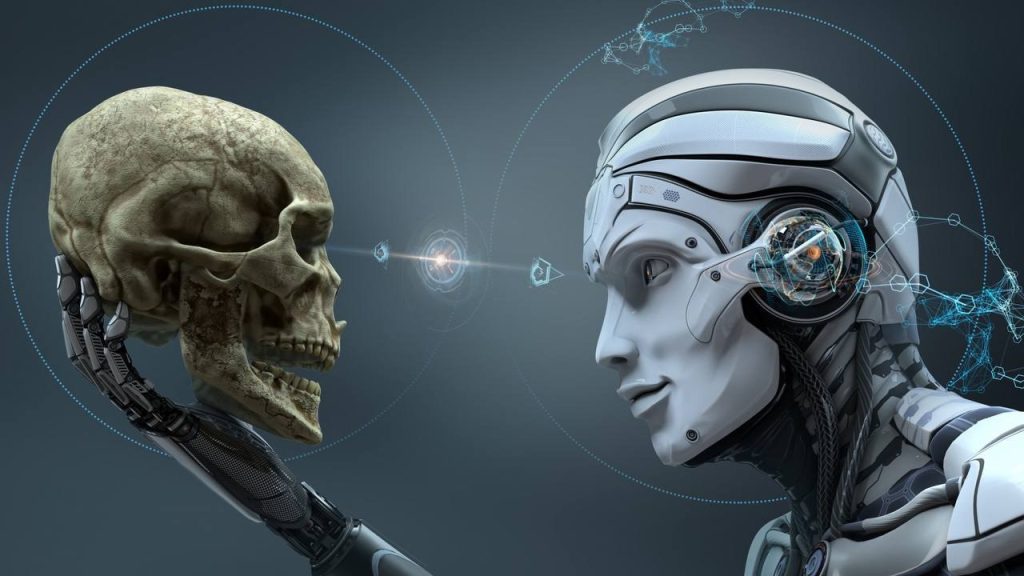Artificial intelligence: a booming business or the end of humanity?
Neural networks and artificial intelligence (AI) have become integral components of modern technology, with applications spanning various fields, from medicine to manufacturing automation. Neural networks create artwork, control vehicles, write articles, pass exams, and even develop software code. Meanwhile, AI-based chatbots and voice assistants are replacing entire call centers.
RAPID GROWTH AND COMPETITIVE ADVANTAGE
The global machine learning market, which includes neural networks, is projected to grow at an annual rate of 25-30%. This growth rate is among the highest in all industries. It’s no wonder that AI technologies have attracted significant investments in recent years. Tech giants like Google, Apple, Meta, and Microsoft view AI as their primary competitive advantage and a crucial means of maintaining market dominance.
Most of the services we’re familiar with, from search engines and office software to traffic management, taxi services, and delivery, will undergo substantial changes in the coming years. The next technological leap for humanity will be driven by AI technologies, and we are just at the beginning of this journey.

POTENTIAL RISKS
The rapid integration of AI technologies into all aspects of life raises legitimate concerns about whether humanity might go too far and lose the ability to control artificial intelligence. Nick Bostrom, a philosophy professor and director of the Future of Humanity Institute at Oxford University, discusses the risks of creating superintelligence and argues that highly intelligent machines could pose a threat to humanity if their development continues without proper control and restrictions.
Sam Altman, CEO of OpenAI, the company behind ChatGPT, believes that the amount of artificial intelligence in the world will double every 18 months. Sam has also quipped, “AI will likely lead to the end of the world, but there will be huge business before that.”
Elon Musk, one of the most prominent figures in the high-tech industry, has repeatedly expressed concerns about the development of AI and neural networks, describing them as “the most likely cause of a global war.” Musk advocates for the implementation of preventive measures to help minimize risks associated with creating highly intelligent systems.
To determine whether we should already be casting a wary eye on our computers, let’s explore what modern neural networks entail.
NEURAL NETWORKS DON'T EQUATE TO ARTIFICIAL INTELLIGENCE
Neural networks are mathematical models and their software implementations based on principles similar to the functioning of living organisms’ nervous systems. Computational modules act as artificial neurons. Each module can process only simple signals, but numerous interconnected elements form multi-layered systems capable of solving complex tasks. A distinguishing feature of neural networks is their ability to self-learn from raw data.
Modern neural networks have several significant characteristics:
- Neural networks are approximate and can make mistakes. For example, a network that recognizes images might identify a dog in a picture with only a certain probability, and that probability will always be less than 100%.
- Neural networks don't understand the context of the tasks they solve.
- Neural networks cannot provide universal results. One neural network may perform a specific, specialized task, such as text or photo recognition or object detection, but it cannot efficiently solve various tasks.
Despite the evident progress in creating self-learning systems, scientists are still far from developing a “thinking computer.” A multitude of complex processes occur simultaneously in the human brain, some of which remain unexplored. We don’t even have a definitive understanding of the technical methods needed to reproduce the thought process.
Daniel Dennett, a renowned AI researcher, Harvard University professor, and cognitive science expert, shared his viewpoint on this issue in an interview: “Neural networks possess tremendous potential, and they can learn and adapt to various tasks, but they are limited by their algorithmic nature and lack of fundamental consciousness and intuition properties. For a machine to acquire full-fledged intelligence, it must be capable of not only processing data but also understanding the meanings and connections underlying that data. So far, we don’t see a path for neural networks to achieve such a level of understanding.”
Scientists agree on one thing: building comprehensive artificial intelligence based on existing modern neural networks is impossible.
THERE'S ONLY SO FAR YOU CAN GO WITHOUT A TECHNICAL FOUNDATION
One hypothesis suggests that to create artificial consciousness, it’s necessary to model a physical neural network where each neuron would resemble a processor core. Such a neural network could more closely mimic the human brain model.
The following elements of technical infrastructure are considered for creating artificial intelligence:
- Special chips that simulate neuron functioning (the first such chip was developed by IBM in 2014);
- Photonic networks. In 2016, the first physical photonic neural network was launched, and in 2018, a neural network based on terahertz radiation was created.
All these efforts are currently in the early prototype stage and have not demonstrated results that bring us even remotely closer to a significant breakthrough in creating artificial intelligence.
TIME TO PREPARE
As we know, it’s impossible to halt technological progress. This means we have at least several decades to develop a system of restrictive measures and control mechanisms to prevent losing control over intelligent technology. A positive example of successful management of a dangerous technology for humanity is the system of measures in the field of nuclear weapons.
So, what will happen if one day the genie does escape the bottle? The answer is obvious – in the best-case scenario, humans will cease to be the dominant species on the planet.